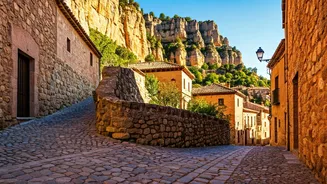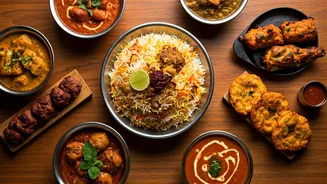Discovering Southeast Asia
Thailand and Cambodia, jewels of Southeast Asia, are celebrated for their distinctive allure. Thailand enchants visitors with its vibrant culture, exquisite
cuisine, and picturesque landscapes. From bustling city life to tranquil beaches, it caters to diverse interests. Historical sites like the Grand Palace in Bangkok and the ancient temples of Ayutthaya provide glimpses into Thailand's rich past. On the other hand, Cambodia offers a mesmerizing experience, with the majestic temples of Angkor Wat being a prime attraction. The country's history is imprinted in its art, architecture, and traditions, offering a journey through time for travelers. Both countries welcome a wide variety of people, eager to explore their unique offerings and the treasures within their borders. They provide memorable travel experiences, combining cultural immersion with relaxation and adventure.
Thailand's Diverse Appeal
Thailand's charm stems from its diverse attractions. Bangkok, the capital, is a vibrant metropolis where traditional and modern elements blend. The city's street food scene, floating markets, and glittering temples create a sensory feast for visitors. Away from the capital, the country offers stunning beaches, like those in Phuket and Krabi, known for their crystal-clear waters and vibrant nightlife. Northern Thailand offers a different experience, with lush mountains, elephant sanctuaries, and cultural experiences in cities like Chiang Mai. From adventurous treks to relaxing beach holidays, Thailand provides a variety of options to suit every type of traveler. The country’s commitment to hospitality and the warmth of its people make it a welcoming destination. Tourists can immerse themselves in Thailand's unique cultural tapestry, from traditional festivals to everyday life.
Cambodia's Ancient Wonders
Cambodia is renowned for its historical and cultural significance, with the ancient temples of Angkor Wat standing as a symbol of its rich past. Angkor Wat, a UNESCO World Heritage site, is a magnificent temple complex that showcases the remarkable architecture of the Khmer Empire. Exploring the intricate carvings and grand structures offers insight into the country's fascinating history. Beyond Angkor Wat, Cambodia offers various cultural experiences, like exploring the capital city, Phnom Penh, known for its Royal Palace and the Silver Pagoda. The country's recent history, including the Khmer Rouge era, is an important part of its story, preserved in memorials and museums. A trip to Cambodia provides a profound blend of historical exploration, cultural immersion, and opportunities for reflection. Visitors often experience the warmth and resilience of the Cambodian people.
Planning Your Trip
Planning a trip to Thailand and Cambodia requires consideration of various factors to ensure a fulfilling experience. The best time to visit both countries is during the dry season, typically from November to April, when the weather is ideal for exploration and outdoor activities. Travelers should research and plan their itineraries based on their interests, from historical sites and cultural attractions to outdoor adventures. For Thailand, tourists need to check the local festivals and events to coincide with their visit. In Cambodia, exploring the country's diverse landscapes is best done with a balance of guided tours and personal exploration. It's wise to consider local customs and dress codes. Being aware of the local currency and transportation options is important. With a good plan, visitors can maximize their trip, making it safe and enjoyable for all.
Cultural Considerations
Understanding and respecting local customs is crucial to fully appreciating the cultural beauty of Thailand and Cambodia. In Thailand, it's considered polite to dress respectfully when visiting temples and religious sites. This includes covering shoulders and knees. Directing the soles of your feet towards people or religious objects is considered disrespectful. The 'wai,' a slight bow with hands pressed together, is a traditional greeting. In Cambodia, visitors should also dress respectfully when visiting temples, and avoid public displays of affection. It's important to ask for permission before taking photographs of people. Both countries value respect for elders and religious practices. Learning a few basic phrases in the local language can enhance interactions with locals, showing respect and opening up opportunities for connection. Being mindful of these cultural nuances contributes to a more enriching and respectful travel experience.
Culinary Delights
Thailand and Cambodia have distinct yet equally appealing cuisines, offering a delightful sensory experience. Thai cuisine is known for its diverse flavors, combining sweet, sour, spicy, and savory tastes. Dishes like Pad Thai, green curry, and Tom Yum soup are famous worldwide. Street food markets offer an array of delicious and affordable options. Cambodian cuisine, while less globally recognized, is equally delicious. Amok, a fish curry steamed in a banana leaf, and Lok Lak, a stir-fried beef dish, are popular. The use of fresh herbs, spices, and seafood creates light and fragrant meals. Both countries offer excellent opportunities to explore local markets and cooking classes. Sampling local dishes is a fantastic way to immerse in the culture, and savoring the unique culinary experiences is a must-do for any traveler. Food is an integral part of the travel experience.














